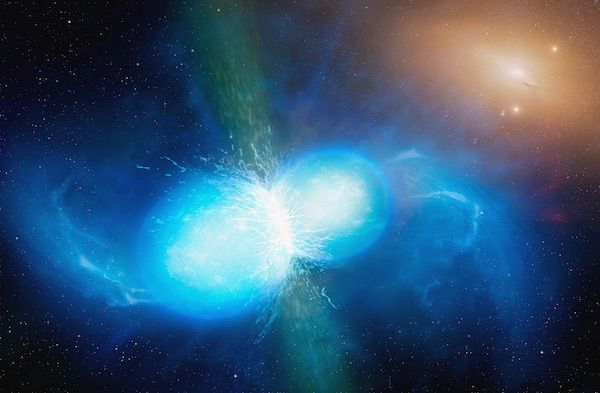In a remote galaxy, two neutron stars circled one another in a ballet of ultimate destruction and inevitable creation. Both objects were the remnants of massive stars, probably from a binary system, that had become supernovae long before. Each was incredibly massive, with neutrons so closely packed that their cores became diamond. The dance, alas, could not go on forever and the stars collided, releasing unimaginable energy and sending gravitational waves speeding through the fabric of space-time.
In 2017, 1.3 billion years later, astronomers detected those waves with the Laser Interferometer Gravitational-wave Observatory. Albert Einstein’s prediction that the universe should be filled with such faint ripples caused by gravity from massive objects included sources such as neutron star mergers. Yet finding a disturbance in the fabric of space-time from this kind of event had proven elusive until then. When news of the detection of gravitational waves broke, the media wanted to know what else happens when neutron stars collide. Astronomers explained that, beyond the destruction of the stars and the ripples in space, such events also create all the heavy elements we know in the blink of an eye. But what did the media key into? That gold comes from outer space.
